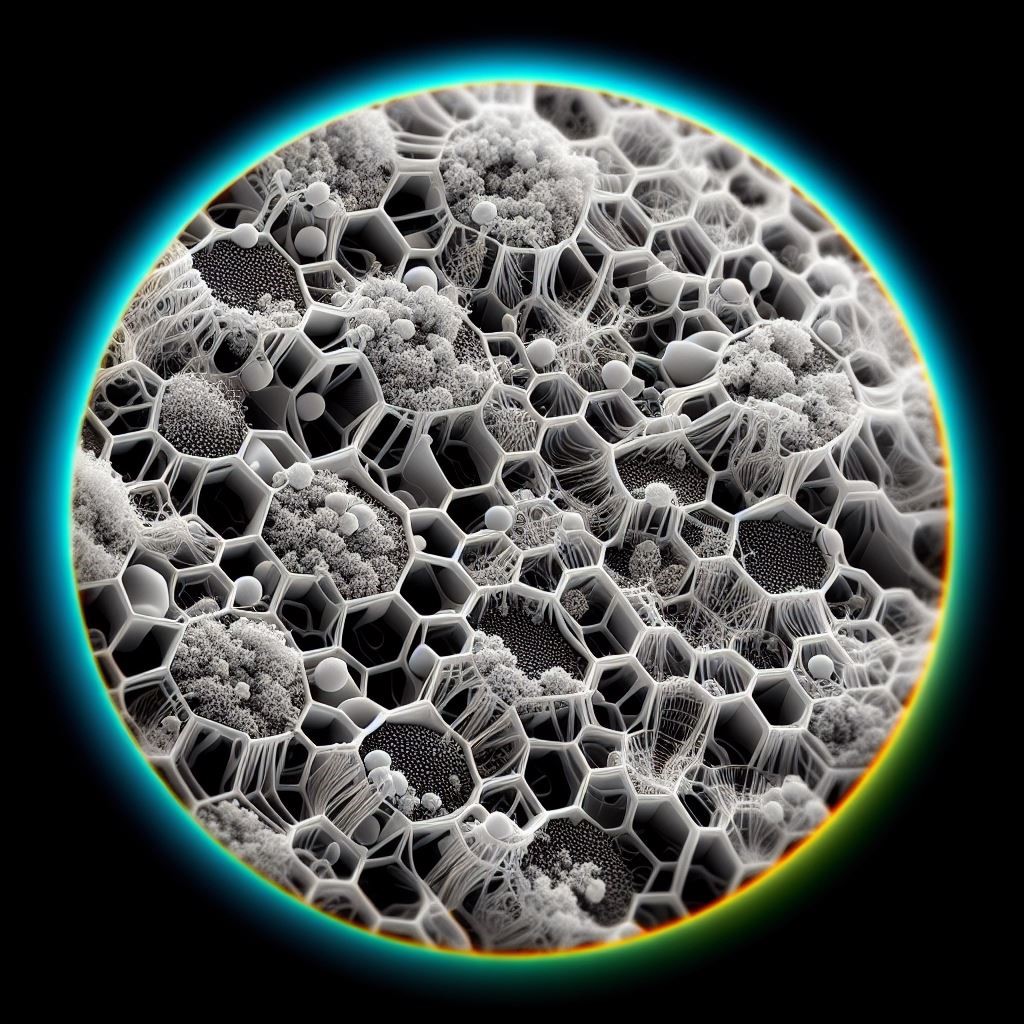


Our environment is under increasing pressure from chemical pollutants contaminating soil, water, and air. Particularly concerning are persistent substances such as per- and polyfluoroalkyl substances (PFAS) and pharmaceutical residues. These belong to a group of over 4,700 compounds1 whose effects on human health and ecosystems remain largely unknown. Despite advanced wastewater treatment technologies, any of these pollutants still enter the environment, threatening fragile ecosystems – even in remote regions like the Arctic.
This is where the R&D project DeDrug-Bio comes in. By leveraging biohybrid filtration systems, harmful substances can be removed efficiently and sustainably – an innovative approach that seamlessly integrates nature and technology. The term "biohybrid" refers to the combination of biological and synthetic components to create synergistic effects. In material science, this means embedding biological elements such as microorganisms or enzymes into engineered materials designed to optimize biological processes – for example, through tailored surface structures or biocompatible carrier materials.
Goals and challenges
The primary goal of DeDrug-Bio is to develop a filtration system capable of breaking down persistent pollutants, such as the pharmaceutical compound diclofenac. This is achieved using microbially active filter surfaces that enzymatically convert contaminants into harmless byproducts. The key challenge lies in integrating these biological processes into technical systems that remain robust and efficient under real-world wastewater treatment conditions.
Fraunhofer IFAM plays a key role in developing tailored surface structures. Using advanced techniques such as laser and plasma treatments, the institute engineers material surfaces that provide optimal conditions for microbial activity. Additionally, Fraunhofer IFAM evaluates biofilm performance and contributes its patented expertise in functional surface technologies2.
Within the research consortium, SITEC Industrietechnologie GmbH is responsible for scaling the technology for industrial applications, while hanseWasser Bremen GmbH investigates its integration into wastewater treatment plants. The interdisciplinary collaboration is further supported by MARTIN Membrane Systems AG, a specialist in filtration technologies, and the Kompetenzzentrum Spurenstoffe Baden-Württemberg, which provides expertise in micropollutant removal.
Technology: Inspired by nature
The filtration system design is inspired from nature- particularly marine sponges and corals, which have evolved highly efficient filtration mechanisms. These principles are translated into a self-regenerating, energy-autonomous, and modular filtration system that can be adapted to various operational requirements.
By combining biological degradation processes with cutting-edge material technologies, DeDrug-Bio offers an energy-efficient and cost-effective solution. The long-term objective is to enhance global environmental standards while optimizing wastewater treatment operations.
A look into the future: Sustainability and global applicability
Biohybrid filtration systems enable the targeted removal of pollutants, helping to protect soil, water, and air. At the same time, they reduce energy consumption compared to purely chemical or physical treatment methods, improving both cost-effectiveness and environmental sustainability.
Thanks to their modular design, these systems can be seamlessly integrated into existing infrastructure, offering significant potential for global applications in water and environmental technology – not only in Germany but worldwide. The project highlights how interdisciplinary collaboration and scientific innovation can drive progress in environmental protection while delivering economic benefits.
Collaboration and funding
DeDrug-Bio is coordinated by SITEC Industrietechnologie GmbH and funded by the German Federal Ministry of Education and Research (BMBF) under the "Biologization of Technology" initiative (Funding Code: 13XP5205). The project is administratively supported by VDI Technologiezentrum GmbH. Alongside Fraunhofer IFAM, key project partners include hanseWasser Bremen GmbH, MARTIN Membrane Systems AG, the Kompetenzzentrum Spurenstoffe Baden-Württemberg, along with additional industry and research partners.
1 https://www.umweltbundesamt.de/sites/default/files/medien/2546/publikationen/uba_sp_pfas_web_0.pdf
2 DE102018133553A1
 Fraunhofer Institute for Manufacturing Technology and Advanced Materials IFAM
Fraunhofer Institute for Manufacturing Technology and Advanced Materials IFAM